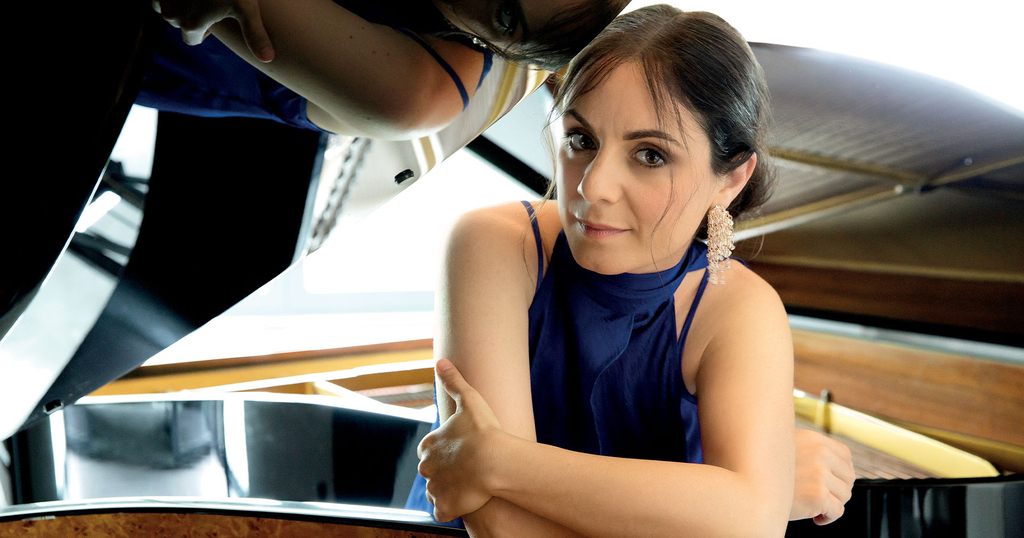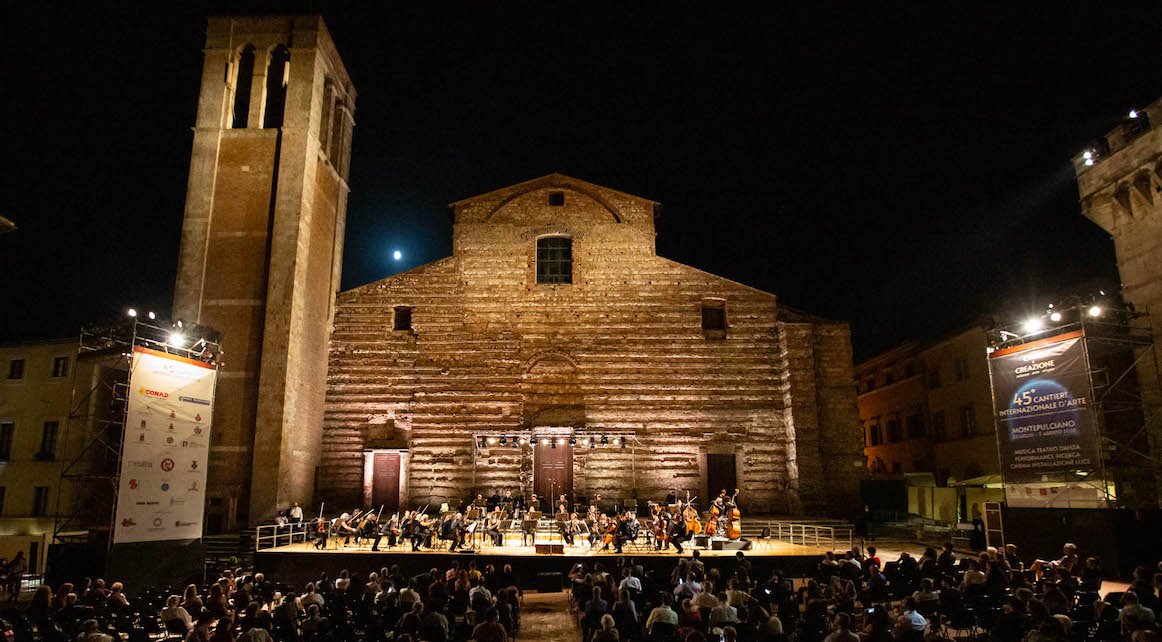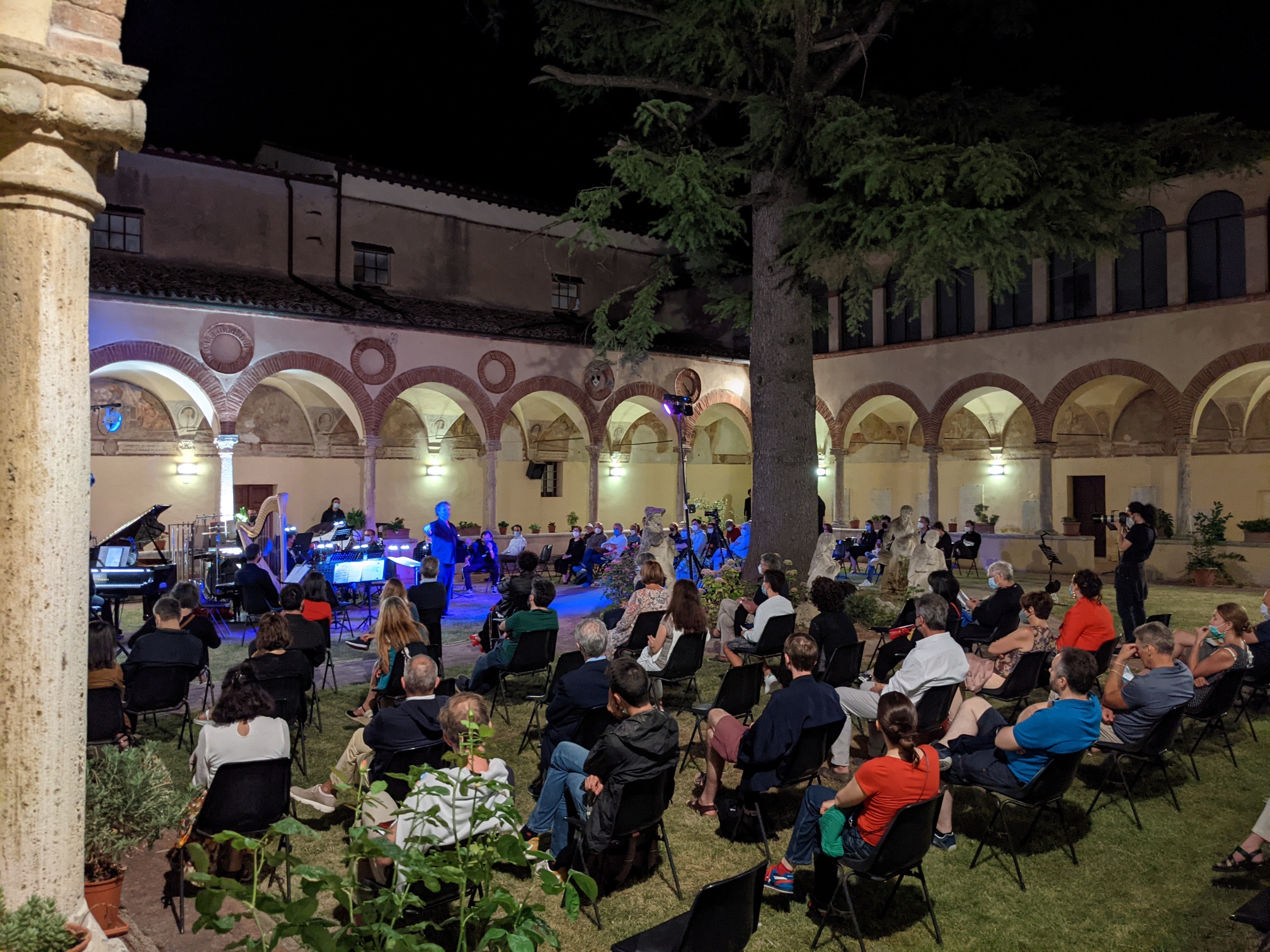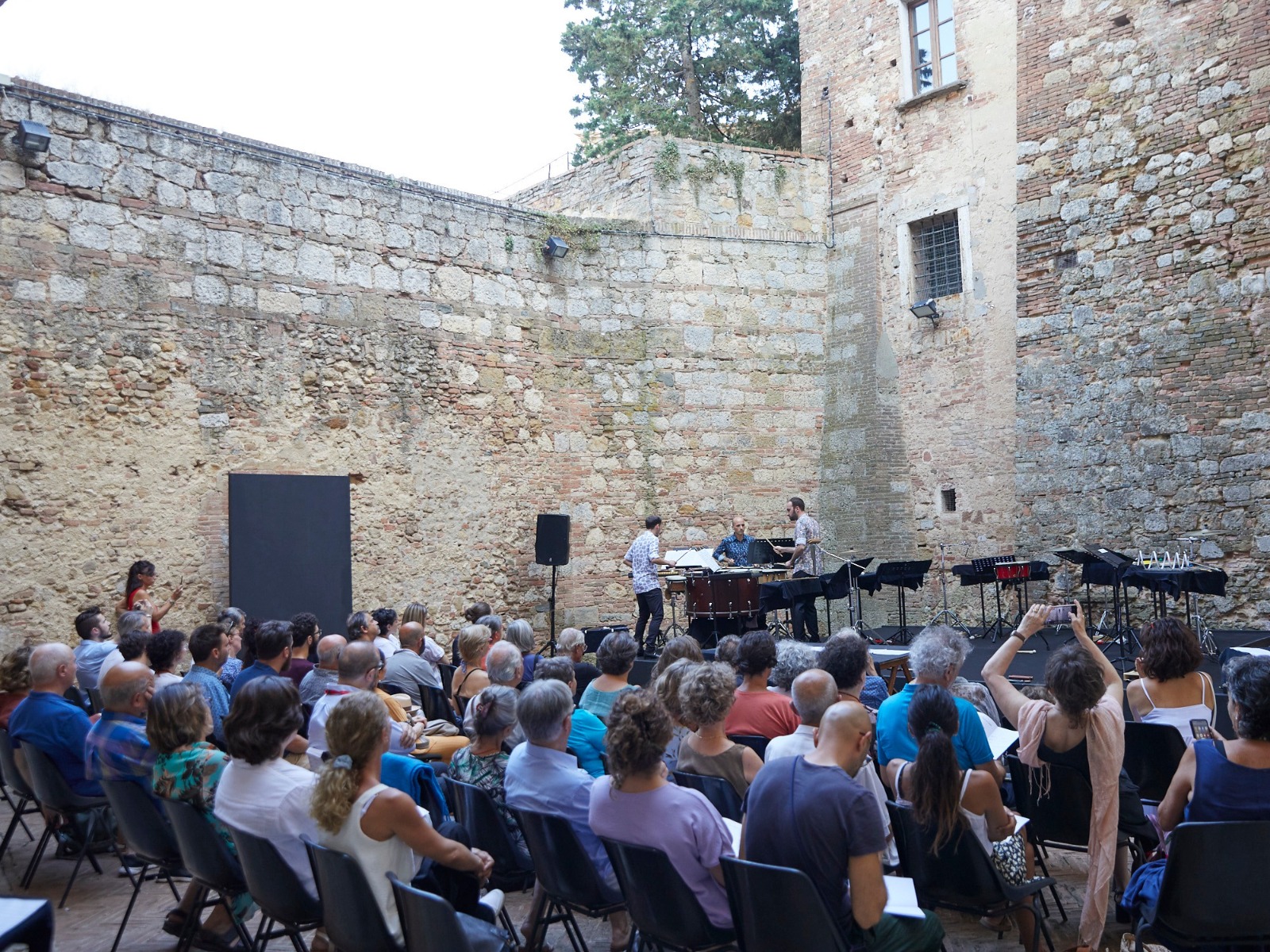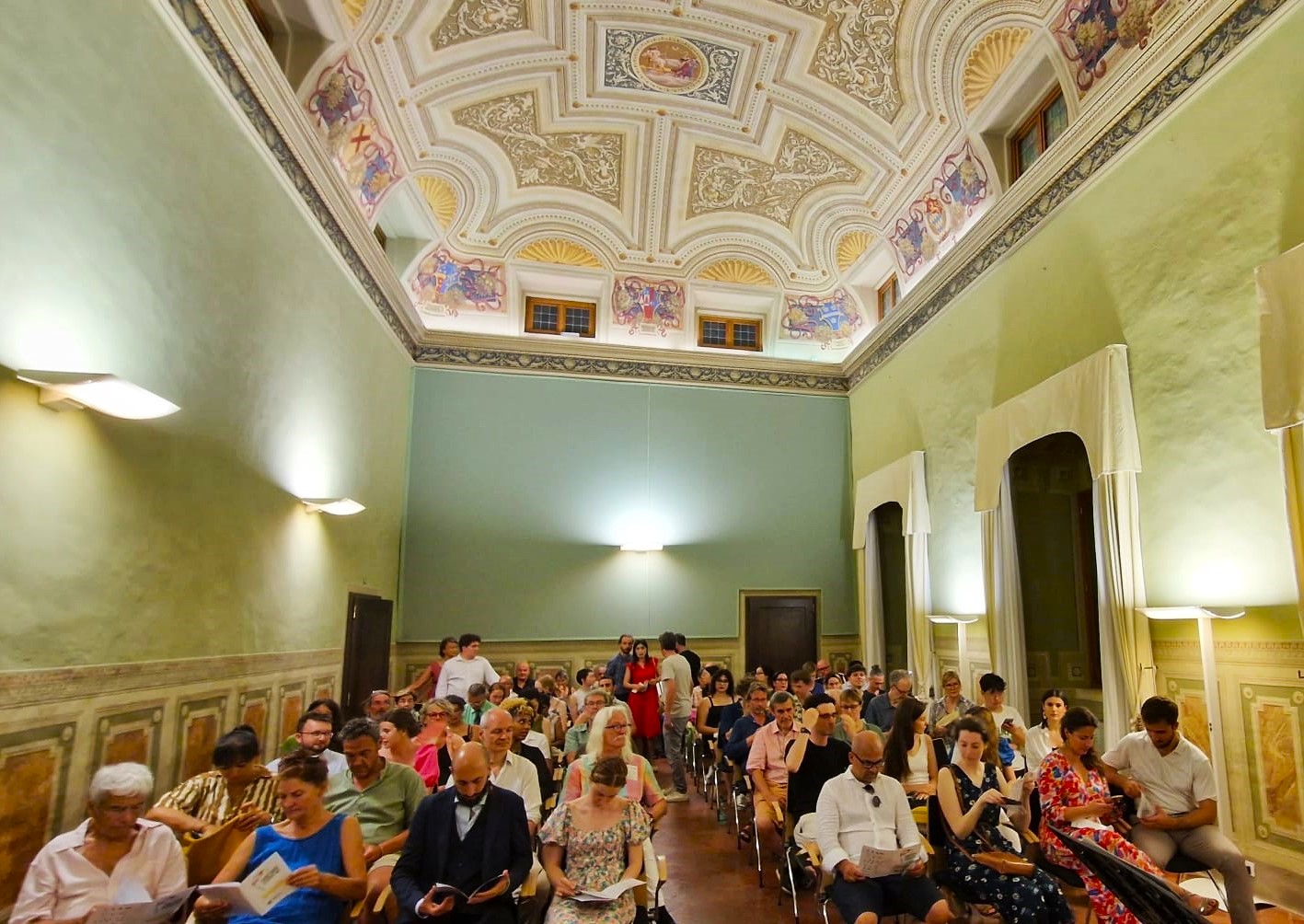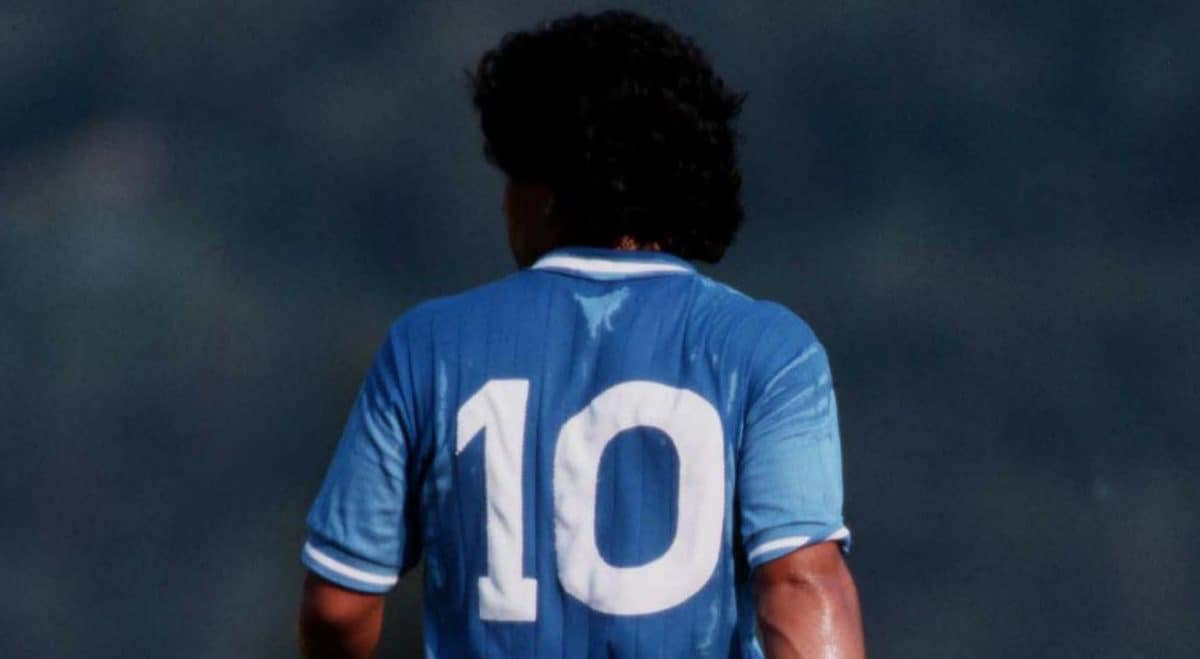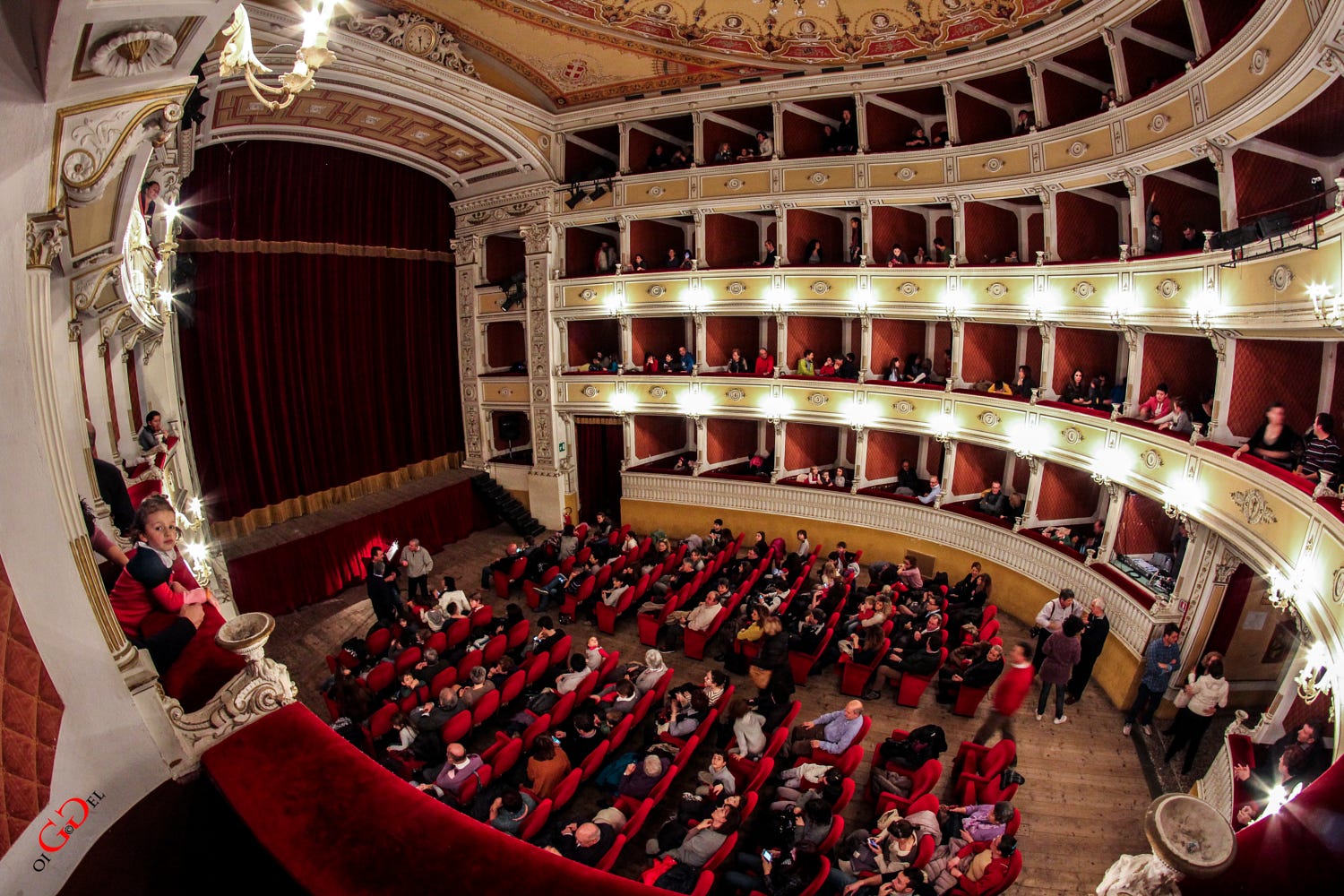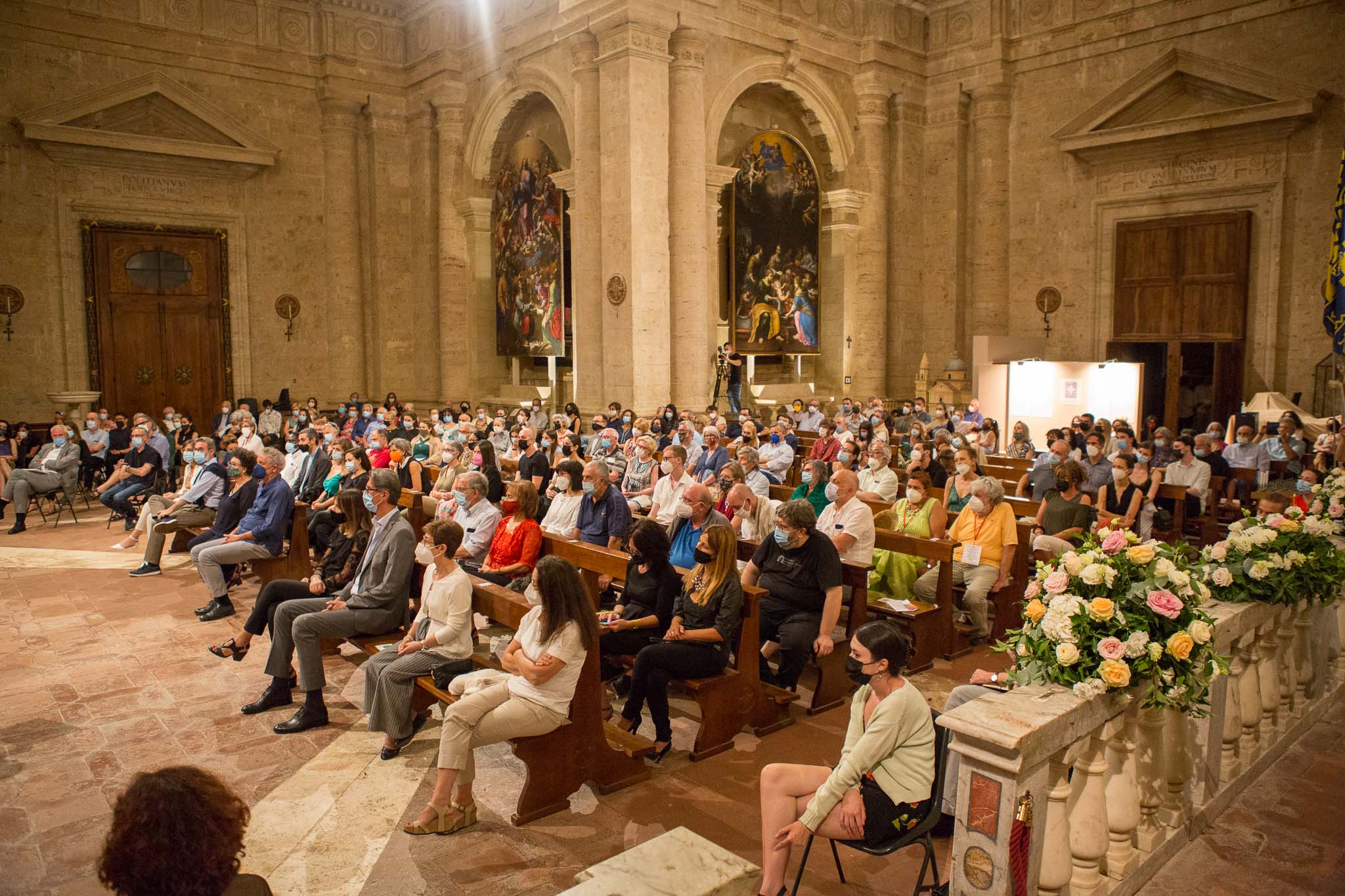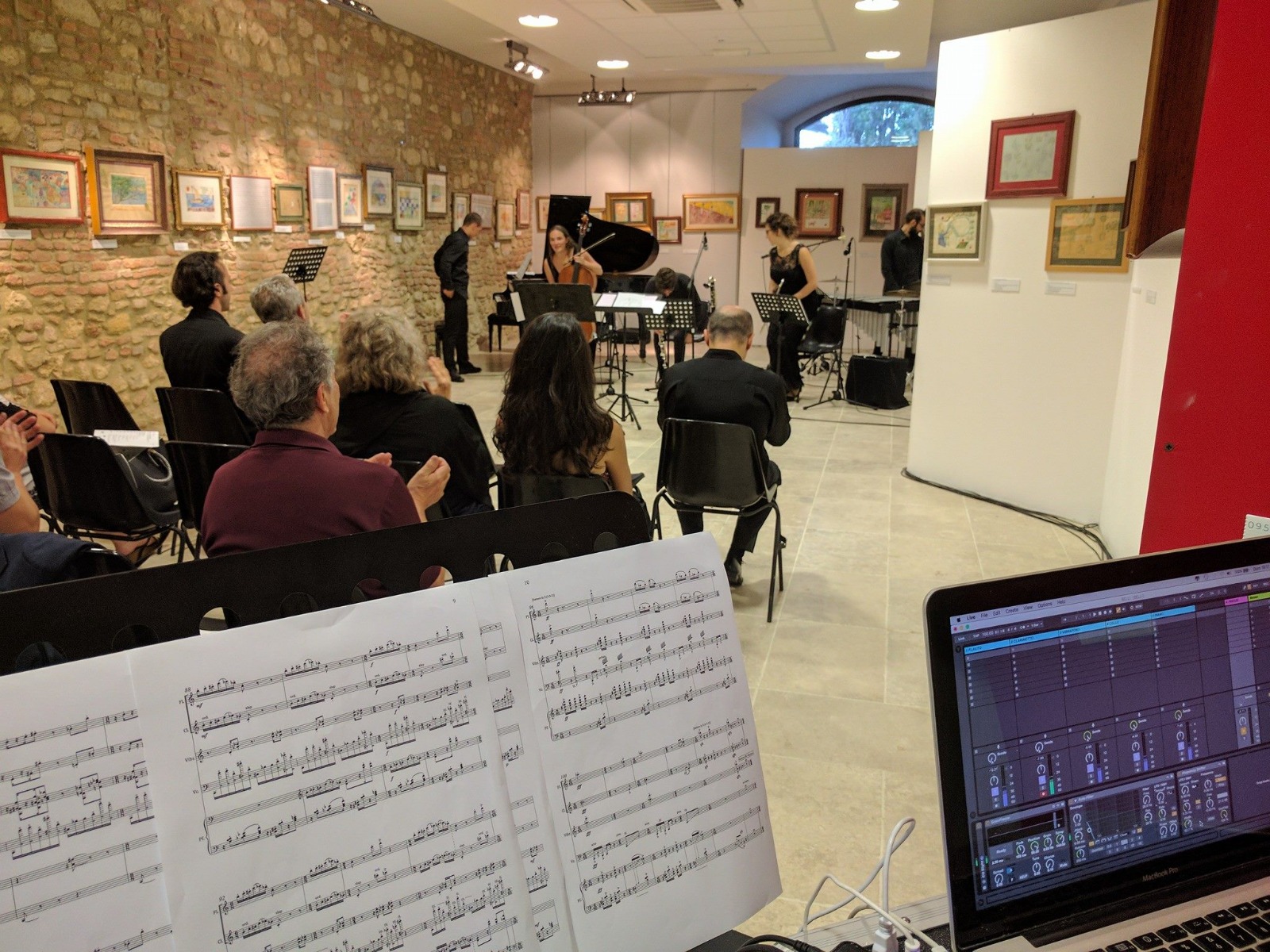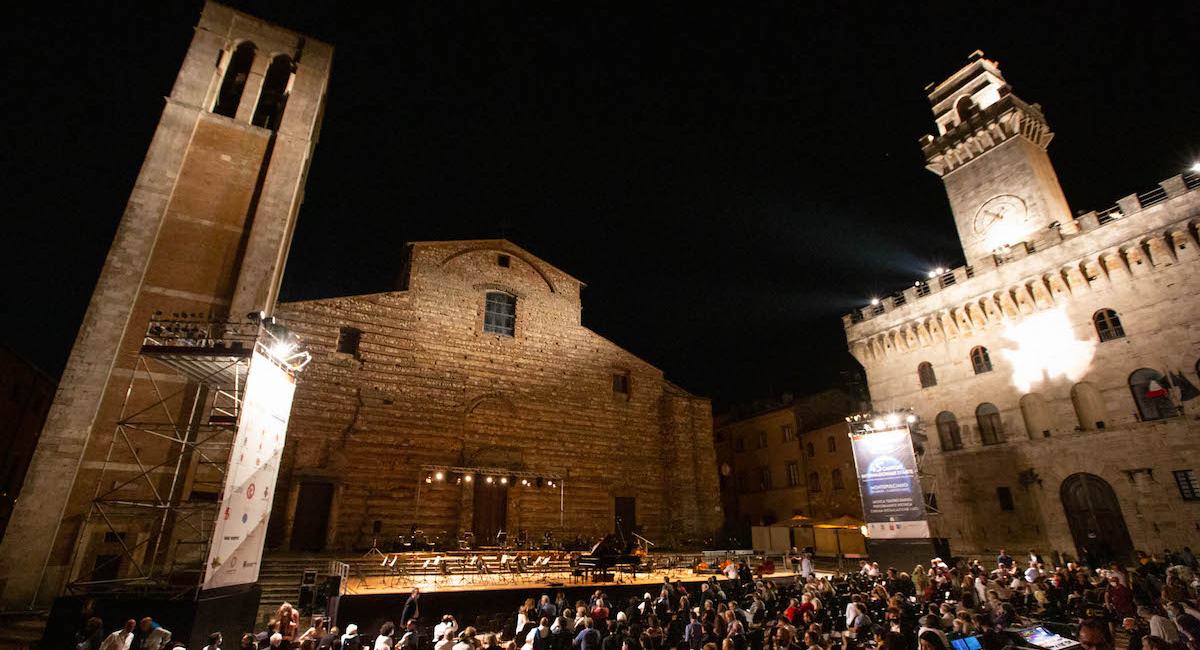RECITAL PER TRIO DI TROMBONI

Cronies Triombone
Gabriele Cacciapaglia
Raffaele Falagario
Nicola Bruno
vincitori del concorso
"Arezzo 50&più"
MONTEPULCIANO - Salone di Palazzo Ricci
DOMENICA 21 LUGLIO
Ore 18
INGRESSO € 5
ACQUISTA IL BIGLIETTO
Per tutti i biglietti acquistati in prevendita, la maggiorazione prevista è di 1,50 euro.
Daniel Speer
(1636 – 1707)
Sonata I
Christian Lindberg
(1958)
A salute to a sausage society
Brian Lynn
(1954)
Bachy things
Ignaz X. R. von Seyfried
(1776 – 1841)
Equale
Eric Ewazen
(1954)
Eaglehawk 
Anton Bruckner
(1824 – 1896)
Aequale WAB114
Frigyes Hidas
(1928 – 2007)
Interludio
Eugène Bozza
(1905 – 1991) 
Andantino
Howard J. Buss
(1951)
The Three Sackbuteers Enter Valhalla
Raymond Premru
(1934 – 1998)
Two pieces for three trombones
Tsotomu Narita
(1984)
 (Starlight highway)
(Starlight highway)
In collaborazione con
Concorso Arezzo 50&Più

Palazzo Ricci – Accademia Europea di Musica e Arte
Montepulciano

SONATA I – DANIEL SPEER (1636 – 1707) Le 2 Sonate per tre tromboni sono esempi musicali che Daniel Speer, autore del trattato Grund-richtiger Unterricht der Musikalischen Kunst (Ulm 1687), inserisce nella seconda edizione di tale trattato (1697), nel III tomo: Allerhand Instrumenten Methoden.
A SALUTE TO A SAUSAGE SOCIETY CL9 – CHRISTIAN LINDBERG (1958)?Il trombonista svedese Christian Lindberg è uno dei più celebri solisti a livello mondiale. Dal 1995 inizia, parallelamente alla carriera solistica, l’attività di compositore. Nel 1999 compone A Salute for a Sausage Society per tre tromboni, ispirato da una immaginaria “Società mondiale delle Salsicce”: Mio suocero è un mangiatore di salsicce molto entusiasta. Ogni volta torna nel suo paese natale, l'Ungheria, per comprare tutti i tipi di salsicce diverse. Mi piaceva molto unirmi a lui nelle sue sessioni di consumo di salsicce, e in una di quelle sessioni gli ho chiesto se pensava che esistesse una società mondiale delle salsicce...non sapeva nulla del genere, ma la mia fantasia continuava ad essere alimentata, così come il mio stomaco... è allora che mi sono seduto e ho scritto questo Saluto a una Sausage Society.
EQUALE – IGNAZ XAVER RITTER VON SEYFRIED (1776 – 1841) L’Equale è una composizione destinata a voci o strumenti uguali. Durante il XVIII secolo, tale genere affidato ai tromboni assunse carattere funebre, tanto da essere eseguito prima, durante o dopo un funerale. A farne uso sono principalmente i compositori germanici, come Beethoven, che compose i Drei Equale für vier Posaunen per la messa della commemorazione dei fedeli defunti nell'anno 1812. È probabile che Seyfried sia stato influenzato dall’amico Beethoven nel comporre l’Equale – a tre tromboni, databile tra il 1834 e il 1837, che egli stesso, nella sua autobiografia, spiega essere in realtà una rielaborazione di un tema di Mozart, suo presunto maestro, ma non specifica a quale opera fa riferimento.
EAGLEHAWK – ERIC EWAZEN (1954) L’11 dicembre 2004 il compositore statunitense Eric Ewazen è stato ospite a casa di James Lebens, professore di trombone all'Università Laval di Quebec City insieme ad altri due trombonisti della Cathedral Bluffs Symphony di Toronto: Tony Ellis e Bob Brown. Mentre si trovavano in quella casa, sull'Ile d'Orleans, infuriò una bufera di neve. I tre trombonisti iniziarono a suonare vari trii per tromboni, ispirando Ewazen a comporre per loro un brano, che completò quello stesso giorno: Eaglehawk, che, nonostante indichi anche un uccello rapace presente proprio a Quebec City, rappresenta il nome del vino rosso australiano che stavano bevendo durante la bufera.
AEQUALE WAB114 – ANTON BRUCKNER (1824 – 1896) Il compositore austriaco Anton Bruckner, seguendo le orme di Beethoven e di Seyfried, si cimenta con il genere Equale a fine gennaio del 1847, componendo i Zwei Aequale für drei Posaunen (WAB 114 e 149) per il funerale di sua zia Rosalia Mayrhofer (1770-1847).
INTERLUDIO – FRIGYES HIDAS (1928 – 2007)?Frigyes Hidas è stato un compositore ungherese che ha contribuito molto alla letteratura solistica e cameristica di strumenti a fiato, ed in particolare del trombone. Ne è un esempio l’Interludio per tre tromboni, una composizione del 1977 che, come suggerisce il titolo, andrebbe eseguita a metà programma.
ANDANTINO – EUGÈNE BOZZA (1905 – 1991) Eugène Bozza è stato un compositore francese, vincitore del Prix de Rome nel 1934. Tra le sue composizioni spiccano quelle per strumenti a fiato ed in particolare per trombone. Andantino fa parte di una raccolta di 10 trii per tromboni Trios modernes (1966) raccolte da Raymond Dhellemmes, docente di trombone del Conservatorio di Tourcoing.
THE THREE SACKBUTEERS ENTER VALHALLA – HOWARD J. BUSS (1951) Howard J. Buss è un compositore americano che nel 2018 ha vinto il National Composition Competition dell’American Trombone Workshop con il brano The Three Sackbuteers Enter Valhalla per trio di tromboni. È un brano fantasy in cui il compositore immagina l'ingresso di tre suonatori di Sackbut (l’antenato del trombone) nell'enorme sala della mitologia norrena, il Valhalla. La composizione, infatti, inizia e termina con un grido di guerra vichingo.
TWO PIECES FOR THREE TROMBONES – RAYMOND PREMRU (1934 – 1998) Risalenti al 1951, i Two pieces for three trombones sono due brani, di cui il primo largo ed espressivo Felicity e il secondo ritmato ed articolato Episode, del trombonista e compositore statunitense Raymond Premru. [STARLIGHT HIGHWAY] - TSUTOMU NARITA (1984) Il brano, il cui titolo descrive un’autostrada stellata, è stato commissionato dalla Yokohama Ryokuen Comprehensive High School di Kanagawa e composto nell’agosto 2009 da Tsutomu Narita, compositore principalmente di musiche per videogame.
[STARLIGHT HIGHWAY] - TSUTOMU NARITA (1984) Il brano, il cui titolo descrive un’autostrada stellata, è stato commissionato dalla Yokohama Ryokuen Comprehensive High School di Kanagawa e composto nell’agosto 2009 da Tsutomu Narita, compositore principalmente di musiche per videogame.
SONATA I – DANIEL SPEER (1636 – 1707)
The 2 Sonatas for three trombones are musical examples that Daniel Speer, author of the treatise Grund-richtiger Unterricht der Musikalischen Kunst (Ulm 1687), inserted in the second edition of this treatise (1697), volume III: Allerhand Instrumenten Methoden.
A SALUTE TO A SAUSAGE SOCIETY CL9– CHRISTIAN LINDBERG (1958). Swedish trombonist Christian Lindberg is one of the most famous soloists in the world. In 1995 he began, in parallel with his solo career, his activity as a composer. In 1999 he composed A Salute for a Sausage Society for three trombones, inspired by an imaginary "World Sausage Society": My father in law is a very entusiastic sausage eater. Every time he goes back to his home country, Hungary, he buys all sorts of different sausages. I liked very much to join him in his sausage eating sessions, and at one of those sessions I asked him if he thought there was a world sausage society...he did not know of any such thing, but my fantasy continued to be fed, as well as my stomach...that is when I sat down and write this Salute to a Sausage Society.
EQUALE – IGNAZ XAVER RITTER VON SEYFRIED (1776 – 1841)
Equale is a composition intended for equal voices or instruments. During the 18th century, this genre played by trombones took on a funereal character, so much so that it was performed before, during or after a funeral. It was mainly used by Germanic composers, such as Beethoven, who composed the Drei Equale für vier Posaunen for the All Souls's Day in 1812. It is probable that Seyfried was influenced by his friend Beethoven in composing the Equale – for three trombones, datable between 1834 and 1837, which he himself, in his autobiography, explains is actually a reworking of a theme by Mozart, his alleged master, but does not specify which work he refers to.
EAGLEHAWK – ERIC EWAZEN (1954) On 11 December 2004 the American composer Eric Ewazen was a guest at the home of James Lebens, professor of trombone at Laval University in Quebec City together with two other trombonists from the Cathedral Bluffs Symphony in Toronto: Tony Ellis and Bob Brown. While they were in that house, on the Ile d'Orleans, a snowstorm raged. The three trombonists began playing various trombone trios, inspiring Ewazen to compose a piece for them, which he completed that same day: Eaglehawk, which, although it also indicates a bird of prey present in Quebec City, represents the name of the Australian red wine which they were drinking during the storm.![]()
AEQUALE WAB114 – ANTON BRUCKNER (1824 – 1896)
The Austrian composer Anton Bruckner, following in the footsteps of Beethoven and Seyfried, ventured into the Equale genre at the end of January 1847, composing the Zwei Aequale für drei Posaunen (WAB 114 and 149) for the funeral of his aunt Rosalia Mayrhofer (1770 -1847).
INTERLUDE – FRIGYES HIDAS (1928 – 2007)
Frigyes Hidas was a Hungarian composer who contributed greatly to the solo and chamber literature of wind instruments, and in particular the trombone. An example of this is the Interlude for three trombones, a composition from 1977 which, as the title suggests, should be performed in the middle of the program.
ANDANTINO – EUGÈNE BOZZA (1905 – 1991)
Eugène Bozza was a French composer, winner of the Prix de Rome in 1934. Among his compositions those for wind instruments and in particular for trombone stand out. Andantino is part of a collection of 10 trios for trombones Trios modernis (1966) collected by Raymond Dhellemmes, trombone teacher at the Tourcoing Conservatory.
THE THREE SACKBUTEERS ENTER VALHALLA – HOWARD J. BUSS (1951) Howard J. Buss is an American composer who in 2018 won the National Composition Competition of the American Trombone Workshop with the piece The Three Sackbuteers Enter Valhalla for trombone trio. It is a fantasy piece in which the composer imagines the entrance of three Sackbut (the ancestor of the trombone) players into the enormous hall of Norse mythology, Valhalla. The composition, in fact, begins and ends with a Viking war cry.
TWO PIECES FOR THREE TROMBONES – RAYMOND PREMRU (1934 – 1998) Dating back to 1951, the Two pieces for three trombones are two compositions, of which the first is large and expressive Felicity and the second is rhythmic and articulated Episode, by the American trombonist and composer Raymond Premru. [STARLIGHT HIGHWAY] - TSUTOMU NARITA (1984) The song, whose title, describes a starry highway, was commissioned by Yokohama Ryokuen Comprehensive High School in Kanagawa and composed in August 2009 by Tsutomu Narita, composer mainly of music for video games.
[STARLIGHT HIGHWAY] - TSUTOMU NARITA (1984) The song, whose title, describes a starry highway, was commissioned by Yokohama Ryokuen Comprehensive High School in Kanagawa and composed in August 2009 by Tsutomu Narita, composer mainly of music for video games.
 Sostieni i progetti
Sostieni i progetti Amministrazione Trasparente
Amministrazione Trasparente Contatti
Contatti
